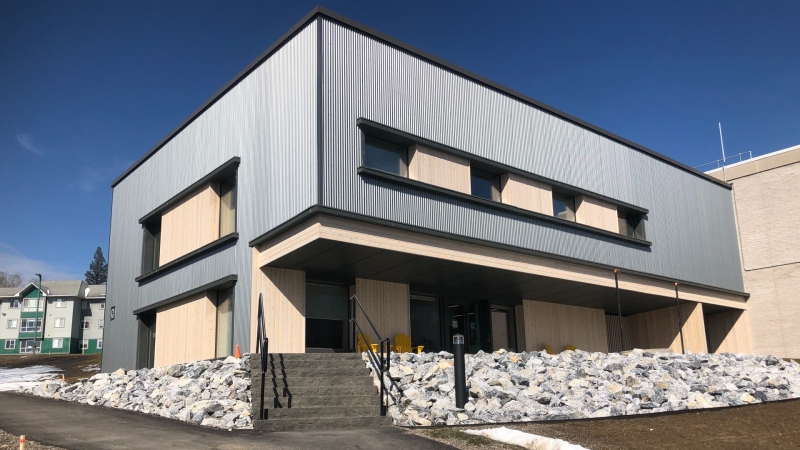Facilities Management Building achieves Passive House certification
As we celebrate Earth Day, learn more about our new Facilities Management Building, UNBC's second certified Passive House.

With warmer weather on the not too distant horizon, occupants of the new ultra-energy-efficient Facilities Management Building can expect to stay cool all summer long thanks to an innovative, inexpensive solution in the building’s cooling system design.
Instead of tapping into the existing campus cooling system, the building takes a side stream of water from the campus domestic cold water system and runs it through a heat exchanger. From there, a hydronic heating/cooling system in the floor controls the temperature in the building.
“We have a 14-inch water line coming into the campus,” explains Assistant Director of Facilities Jason McCannon. “We borrow some of that water for a few minutes and send it back into the domestic water system. It provides free cooling to the entire building.”
The result is “free cooling” which means the building does not use electric chillers in the process of cooling.
It’s one of the many design and engineering accomplishments that makes the building unique. As UNBC celebrates Earth Day, we wanted to highlight some of the special aspects of the building.
The building was designed to meet the exacting International Passive House Standard for energy efficiency and building performance. Last year it passed the third party performance testing requirements, making it the second UNBC building to meet the International Passive House threshold, along with the Wood Innovation Research Lab.
Among the other innovations in the building, are:
- An elevated corridor called “the link” which provides access to the Power Plant and associated infrastructure.
- A cantilevered building design that mimics the architectural geometry of the nearby Bio Energy Plant and is a case study in how to build a Passive House with a unique shape.
- Incorporation of a concrete retaining wall into the building envelope design.
- Utilizing UNBC’s renewable energy district heating system and its high thermal performance, this building will emit only one per cent of the Green House Gas (GHG) emissions that it otherwise would have.
“The beauty of Passive House is it’s a performance standard so the materials used to achieve that performance is up to the design team,” McCannon says.
As great as the free cooling is in the summer, the building acts like a thermos when the temperature drops. It’s so efficient that through the entire winter season the building was heated using hot water from a garden hose.
“The building wanted to go into its cooling mode during the winter because we were getting solar heat gain,” McCannon said. “Even when it was freezing outside, the building was trying to cool itself, but we didn’t have that system hooked up yet.”
To obtain the maximum energy efficiency benefits, many passive house buildings are built like a box. That type of design simply wasn’t going to work given the functional requirements of the space and the footprint available on the part of campus.
Located next to the Power Plant, the building is close to underground diesel storage tanks. To maximize the amount of space the building could occupy, UNBC went with a cantilever design with a larger upper floor and smaller ground floor.
“This project shows that buildings of different shapes can still meet the Passive House standard,” McCannon says.
The two-story building is the new home to 25 Facilities staff members. Opened in 2021, it provides a purpose-built space that brings the entire team together in a centralized location on campus.
“We made sure that we applied our space allocation requirements into the design of the building,” he says. “In some cases that might mean offices are smaller than they were in the old location, but the spaces are more functional now than they were before.”
